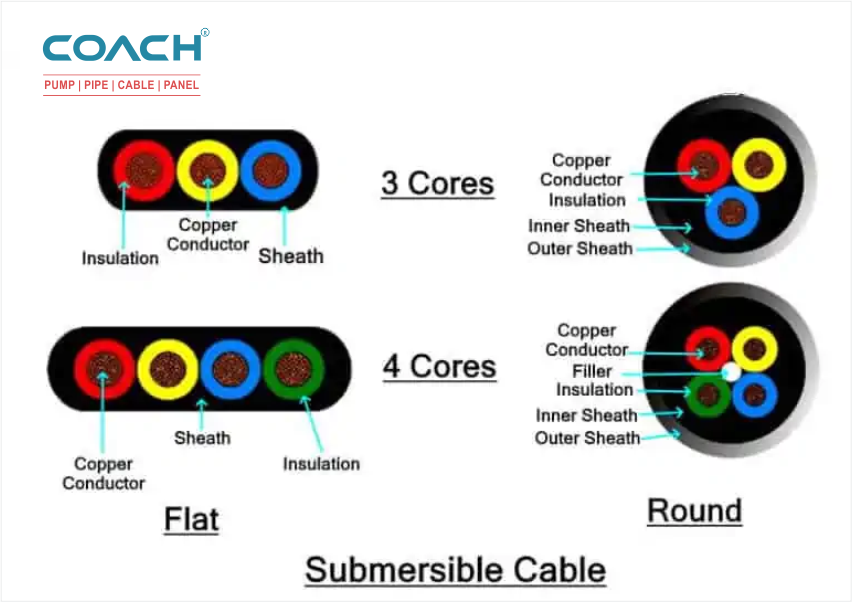Comparing Submersible Flat Cables to Traditional Round Cables: Key Differences and Advantages
- May 25, 2023
- Category :Cables

Introduction:
When it comes to submersible pump installations, the choice of cable plays a crucial role in ensuring reliable and efficient electrical connections. Two common options for submersible pump cables are flat cables and traditional round cables. In this blog post, we will compare submersible flat cables to traditional round cables, highlighting their key differences and advantages in various applications.
- Construction and Design:
The most noticeable difference between submersible flat cables and traditional round cables lies in their construction and design. Flat cables are characterized by their flat, ribbon-like shape, whereas round cables have a cylindrical shape. The flat design of submersible flat cables offers several advantages, including easier installation and reduced space requirements. The flat shape allows for efficient cable laying and fitting into narrow or confined spaces, making it ideal for submersible pump applications where space is limited.
- Flexibility and Maneuverability:
Submersible flat cables are designed to be highly flexible, thanks to their construction and choice of materials. This flexibility enables easier handling and maneuverability during installation, especially in tight spaces. Traditional round cables, although flexible to some extent, maybe more challenging to bend and position in narrow areas. The flexibility of flat cables reduces the effort and time required for cable installation, resulting in more efficient and cost-effective installation processes.
- Resistance to Water and Moisture:
Both submersible flat cables and traditional round cables are designed to withstand water and moisture exposure. However, submersible flat cables often offer superior resistance to water ingress due to their construction and insulation materials. Flat cables typically feature specialized water-blocking technology, such as fillers or tapes, to prevent water penetration and maintain electrical insulation integrity. This makes them particularly suitable for submersible pump applications where the cables are constantly exposed to water.
- Mechanical Protection and Durability:
Submersible flat cables and traditional round cables offer varying degrees of mechanical protection and durability. Flat cables often feature robust jacket materials that provide excellent resistance to abrasion, chemicals, sunlight, and oil. The flat design also allows for better distribution of mechanical stress, reducing the risk of cable damage or breakage. Round cables, on the other hand, may require additional external protective measures, such as conduit or cable trays, to provide similar levels of mechanical protection.
- Ease of Maintenance:
The flat design of submersible flat cables can simplify maintenance tasks compared to traditional round cables. Flat cables are easier to inspect, repair, or replace if necessary, as their layout is more accessible and visible. This can save time and effort during maintenance operations, minimizing downtime for the submersible pump system.
Conclusion:
When selecting the appropriate cable for your submersible pump system, it is essential to consider the specific requirements of your application. While traditional round cables have been widely used in the past, submersible flat cables offer distinct advantages in terms of installation flexibility, space efficiency, water resistance, mechanical protection, and ease of maintenance. Their flat design and specialized construction make them ideal for submersible pump applications, especially in confined spaces or environments where water exposure is a concern. By choosing the right cable type, you can ensure reliable and efficient electrical connections for your submersible pump system, promoting optimal performance and longevity.






